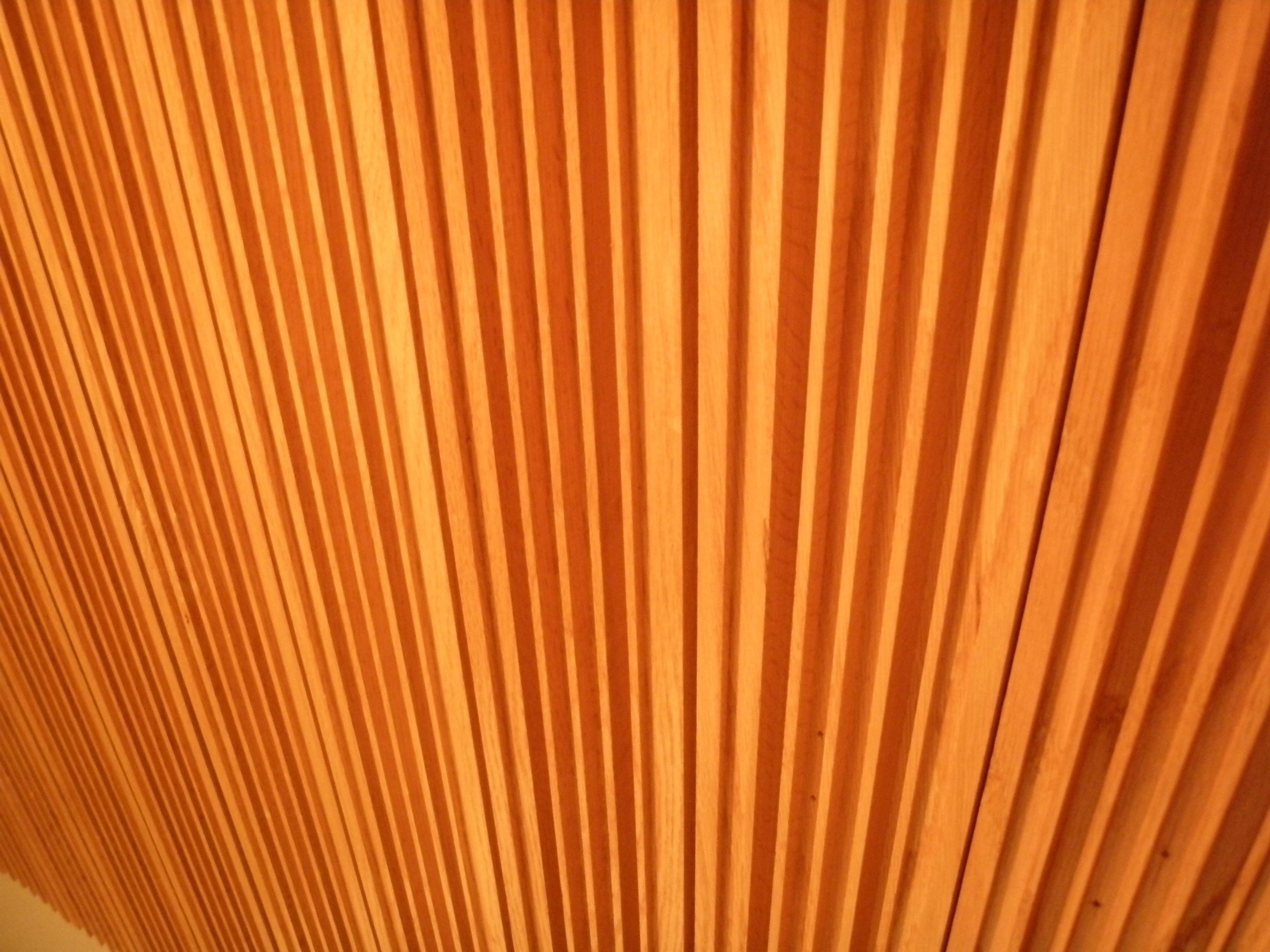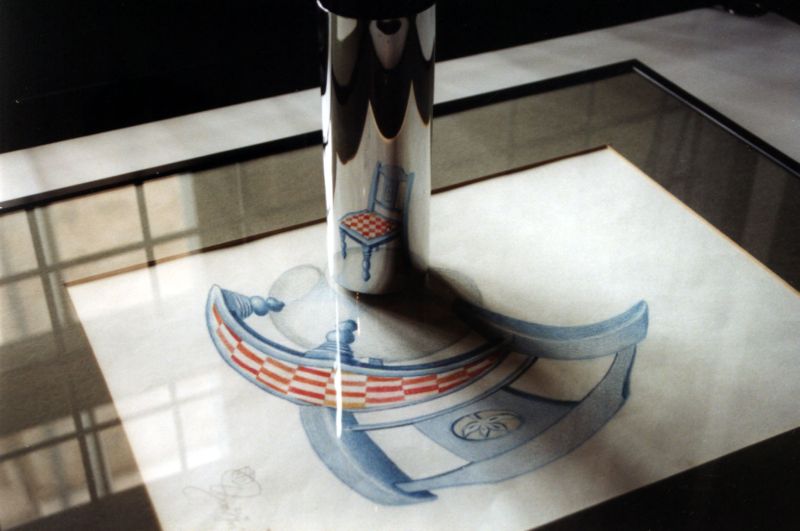|
Catoptric Cistula
A catoptric cistula, also called a catoptric theatre or chest, is a box with several sides lined with mirrors, so as to magnify or multiply images of any object placed inside the box. Of these, there are various kinds for various purposes, such as magnification, deformation, or multiplication of images. The most elaborate catoptric chests known from Ancient Rome exhibited detailed scenes, including expansive libraries, forests, cities, or even vast treasures. Another form of entertainment involved placing an animal, such as a cat, inside a chest, and watching it interact with numerous other cats that appeared to surround it.Gorman, Michael John.Between the Demonic and the Miraculous: Athanasius Kircher and the Baroque Culture of Machines." ''The Great Art of Knowing: The Baroque Encyclopedia of Athanasius Kircher''. Ed. Daniel Stolzenberg. Stanford: Stanford University Libraries. 2001. pp. 59-70. Construction Multiple scenes in one chest Following is an explanation of the constru ... [...More Info...] [...Related Items...] OR: [Wikipedia] [Google] [Baidu] |
Mirror
A mirror, also known as a looking glass, is an object that Reflection (physics), reflects an image. Light that bounces off a mirror forms an image of whatever is in front of it, which is then focused through the lens of the eye or a camera. Mirrors reverse the direction of light at an angle equal to its incidence. This allows the viewer to see themselves or objects behind them, or even objects that are at an angle from them but out of their field of view, such as around a corner. Natural mirrors have existed since Prehistory, prehistoric times, such as the surface of water, but people have been manufacturing mirrors out of a variety of materials for thousands of years, like stone, metals, and glass. In modern mirrors, metals like silver or aluminium are often used due to their high reflectivity, applied as a thin coating on glass because of its naturally smooth and very Hardness (materials science), hard surface. A mirror is a Wave (physics), wave reflector. Light consists ... [...More Info...] [...Related Items...] OR: [Wikipedia] [Google] [Baidu] |
Ancient Rome
In modern historiography, ancient Rome is the Roman people, Roman civilisation from the founding of Rome, founding of the Italian city of Rome in the 8th century BC to the Fall of the Western Roman Empire, collapse of the Western Roman Empire in the 5th century AD. It encompasses the Roman Kingdom (753–509 BC), the Roman Republic (50927 BC), and the Roman Empire (27 BC476 AD) until the fall of the western empire. Ancient Rome began as an Italic peoples, Italic settlement, traditionally dated to 753 BC, beside the River Tiber in the Italian peninsula. The settlement grew into the city and polity of Rome, and came to control its neighbours through a combination of treaties and military strength. It eventually controlled the Italian Peninsula, assimilating the Greece, Greek culture of southern Italy (Magna Graecia) and the Etruscans, Etruscan culture, and then became the dominant power in the Mediterranean region and parts of Europe. At its hei ... [...More Info...] [...Related Items...] OR: [Wikipedia] [Google] [Baidu] |
Catoptric Cistula, Multiple Scenes, From 1728 Cyclopaedia, Vol 2
Catoptrics (from ''katoptrikós'', "specular", from ''katoptron'' "mirror") deals with the phenomena of reflected light and image-forming optical systems using mirrors. A catoptric system is also called a ''catopter'' (''catoptre''). History Ancient Texts ''Catoptrics'' is the title of two texts from ancient Greece: *The Pseudo-Euclidean ''Catoptrics''. This book is attributed to Euclid, although the contents are a mixture of work dating from Euclid's time together with work which dates to the Roman period., accessed 31 January 2013 It has been argued that the book may have been compiled by the 4th century mathematician Theon of Alexandria. The book covers the mathematical theory of mirrors, particularly the images formed by plane and spherical concave mirrors. *Hero's ''Catoptrics''. Written by Hero of Alexandria, this work concerns the practical application of mirrors for visual effects. In the Middle Ages, this work was falsely ascribed to Ptolemy. It only survives in a L ... [...More Info...] [...Related Items...] OR: [Wikipedia] [Google] [Baidu] |
Catoptrics
Catoptrics (from ''katoptrikós'', "specular", from ''katoptron'' "mirror") deals with the phenomena of reflected light and image-forming optical systems using mirrors. A catoptric system is also called a ''catopter'' (''catoptre''). History Ancient Texts ''Catoptrics'' is the title of two texts from ancient Greece: *The Pseudo-Euclidean ''Catoptrics''. This book is attributed to Euclid, although the contents are a mixture of work dating from Euclid's time together with work which dates to the Roman period., accessed 31 January 2013 It has been argued that the book may have been compiled by the 4th century mathematician Theon of Alexandria. The book covers the mathematical theory of mirrors, particularly the images formed by plane and spherical concave mirrors. *Hero's ''Catoptrics''. Written by Hero of Alexandria, this work concerns the practical application of mirrors for visual effects. In the Middle Ages, this work was falsely ascribed to Ptolemy. It only survives in a ... [...More Info...] [...Related Items...] OR: [Wikipedia] [Google] [Baidu] |
Reflection (physics)
Reflection is the change in direction of a wavefront at an interface between two different media so that the wavefront returns into the medium from which it originated. Common examples include the reflection of light, sound and water waves. The ''law of reflection'' says that for specular reflection (for example at a mirror) the angle at which the wave is incident on the surface equals the angle at which it is reflected. In acoustics, reflection causes echoes and is used in sonar. In geology, it is important in the study of seismic waves. Reflection is observed with surface waves in bodies of water. Reflection is observed with many types of electromagnetic wave, besides visible light. Reflection of VHF and higher frequencies is important for radio transmission and for radar. Even hard X-rays and gamma rays can be reflected at shallow angles with special "grazing" mirrors. Reflection of light Reflection of light is either '' specular'' (mirror-like) or '' diffuse'' (retai ... [...More Info...] [...Related Items...] OR: [Wikipedia] [Google] [Baidu] |
Anamorphosis
Anamorphosis is a distorted projection that requires the viewer to occupy a specific vantage point, use special devices, or both to view a recognizable image. It is used in painting, photography, sculpture and installation, toys, and film special effects. The word is derived from the Greek prefix ''ana-'', meaning "back" or "again", and the word ''morphe'', meaning "shape" or "form". Extreme anamorphosis has been used by artists to disguise caricatures, erotic and scatological scenes, and other furtive images from a casual spectator, while revealing an undistorted image to the knowledgeable viewer. Types of projection There are two main types of anamorphosis: ''perspective'' (oblique) and ''mirror'' (catoptric). More complex anamorphoses can be devised using distorted lenses, mirrors, or other optical transformations. An oblique anamorphism forms an affine transformation of the subject. Early examples of Perspective (graphical), perspectival anamorphosis date to the Renaissa ... [...More Info...] [...Related Items...] OR: [Wikipedia] [Google] [Baidu] |
Catoptric Cistula, Single Scene, From 1728 Cyclopaedia, Vol 2
Catoptrics (from ''katoptrikós'', "specular", from ''katoptron'' "mirror") deals with the phenomena of reflected light and image-forming optical systems using mirrors. A catoptric system is also called a ''catopter'' (''catoptre''). History Ancient Texts ''Catoptrics'' is the title of two texts from ancient Greece: *The Pseudo-Euclidean ''Catoptrics''. This book is attributed to Euclid, although the contents are a mixture of work dating from Euclid's time together with work which dates to the Roman period., accessed 31 January 2013 It has been argued that the book may have been compiled by the 4th century mathematician Theon of Alexandria. The book covers the mathematical theory of mirrors, particularly the images formed by plane and spherical concave mirrors. *Hero's ''Catoptrics''. Written by Hero of Alexandria, this work concerns the practical application of mirrors for visual effects. In the Middle Ages, this work was falsely ascribed to Ptolemy. It only survives in a L ... [...More Info...] [...Related Items...] OR: [Wikipedia] [Google] [Baidu] |
Torture Chamber
A torture chamber is a room equipped, and sometimes specially constructed, for the infliction of torture.Princeton Wordnet definition of Torture chamber Wordnetweb.princeton.edu. Retrieved on 2011-08-30. The medieval torture chamber was windowless and often built underground, dimly lit and specifically designed to induce horror, dread and despair. Historically, torture chambers were located in royal palaces, in castles of the nobility and even buildings belonging to the church. They featured secret trap-doors which could be activated to throw victims into dark s where they remained an ... [...More Info...] [...Related Items...] OR: [Wikipedia] [Google] [Baidu] |
The Phantom Of The Opera (novel)
''The Phantom of the Opera'' (, ) is a novel by French author Gaston Leroux. It was first published as a serial in from 23 September 1909 to 8 January 1910, and was released in volume form in late March 1910 by Pierre Lafitte. The novel is partly inspired by historical events at the Paris Opera during the nineteenth century, and by an apocryphal tale concerning the use of a former ballet pupil's skeleton in an 1841 production of Carl Maria von Weber's . It has been successfully adapted into various stage and film adaptations, most notable of which are the 1925 film depiction featuring Lon Chaney, and Andrew Lloyd Webber's 1986 musical. History behind the novel Leroux initially was going to be a lawyer, but after spending his inheritance gambling he became a reporter for . At the paper, he wrote about and critiqued dramas, as well as being a courtroom reporter. With his job, he was able to travel frequently, but he returned to Paris where he became a writer. Because of hi ... [...More Info...] [...Related Items...] OR: [Wikipedia] [Google] [Baidu] |
TARDIS
The TARDIS (; acronym for "Time And Relative Dimension(s) In Space") is a fictional hybrid of a time machine and spacecraft that appears in the British science fiction television series ''Doctor Who'' and its various spin-offs. While a TARDIS is capable of disguising itself, the exterior appearance of the Doctor's TARDIS typically mimics a police box, an obsolete type of telephone kiosk that was once commonly seen on streets in Britain in the 1940s and 50s. Its interior is shown as being much larger than its exterior, commonly described as being "bigger on the inside". Due to the significance of ''Doctor Who'' in popular British culture, the shape of the police box is now more strongly associated with the TARDIS than its real-world inspiration. The name and design of the TARDIS is a registered trademark of the British Broadcasting Corporation (BBC), although the design was originally created by the Metropolitan Police Service. Name TARDIS is an acronym of "Time And Relati ... [...More Info...] [...Related Items...] OR: [Wikipedia] [Google] [Baidu] |
Doctor Who
''Doctor Who'' is a British science fiction television series broadcast by the BBC since 1963. The series, created by Sydney Newman, C. E. Webber and Donald Wilson (writer and producer), Donald Wilson, depicts the adventures of an extraterrestrial being called the Doctor, part of a humanoid species called Time Lords. The Doctor travels in the universe and in time using a time travelling Spacecraft, spaceship called the TARDIS, which externally appears as a British police box. While travelling, the Doctor works to save lives and liberate oppressed peoples by combating List of Doctor Who villains, foes. The Doctor usually travels with Companion (Doctor Who), companions. Beginning with William Hartnell, List of actors who have played the Doctor, fourteen actors have headlined the series as the Doctor; the most recent being Ncuti Gatwa, who portrayed the Fifteenth Doctor from 2023 to 2025. The transition between actors is written into the plot of the series with the Regeneration ... [...More Info...] [...Related Items...] OR: [Wikipedia] [Google] [Baidu] |





